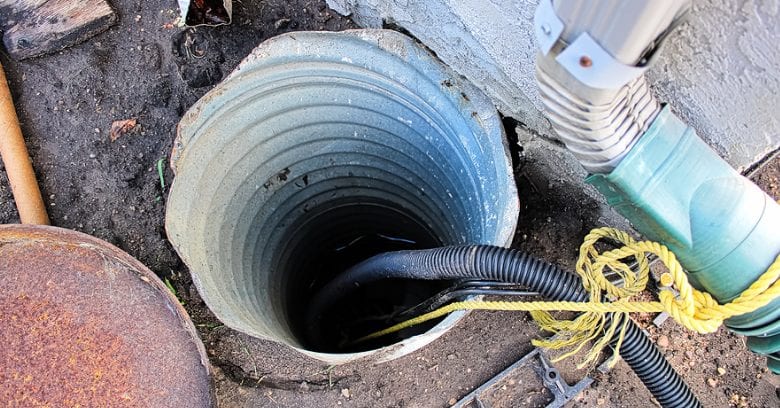Foundation sump pumps are important devices in homes where geography or soil quality makes basement flooding a possibility.
Though they usually work fine on their own without much monitoring, it’s not uncommon for a pump to freeze in the winter.
Frozen basement sump pump systems can spell disaster if they fail to remove water from a filling sump pit.
What is the best solution to avoid this?
Understand how and why these pumps will freeze so you can take necessary precautions to prevent it once the colder weather sets in.
Frozen Foundation Sump Pumps
Generally speaking, when someone says their foundation sump pump has frozen, it usually means the discharge line exiting the pump has frozen.
Although an actually frozen pump is possible, it’s not so likely to happen because the pump itself is inside the house.
Still, it can happen and is usually the result of a previous condition that has prevented the passage of water through the discharge lines.
The solution for dealing with an actually frozen pump is to first clear out the line blockage and determine why it blocked in the first place.
Then the pump must be thawed, checked for any damage that may have occurred if the pump was over-stressed as the passage of water became more difficult, and restarted.
Frozen Discharge Lines
The main cause of wintertime troubles with basement sump pump systems is a frozen discharge line that prevents the pump from doing its job, causing the sump pit to overflow and flood the basement.
Frozen lines happen for two reasons:
- Discharge Line Too Small - While it might seem as though a standard 2” discharge line is fine to use with a sump pump, it’s advisable that those in climates that go below freezing use a larger line. In colder weather, a coating of ice will build up quickly inside smaller lines, increasing by the day until the entire line is blocked. The larger the discharge line, the less likely it is that you will end up with a frozen pump.
- Incorrect Gradient Where the Discharge Line Exits the House - Another way your pump or discharge line could freeze even if it’s a larger line is if the ground gradient where the line exits your home causes any part of the line to collect water, which can freeze solid inside it.
A proper gradient for a sump pump system is a slow downgrade away from the house in such a way that the discharge line empties completely as water is pumped through it and into your sewer line.
If the gradient causes line freezing, the required solution for your sump pump is to dig up the line and re-grade the soil so there is a decline from the house to the end of the discharge line.
Has Your Sump Pump Frozen Before?
If it has, you are likely dealing with one of these issues that can affect how your foundation sump pump performs.
Before it happens again and you end up with a flooded basement, get your basement sump pump system diagnosed by an experienced contractor who can repair the problem.
With the right pump system solution, you won’t be at risk of frozen lines or a damaging flood again!

